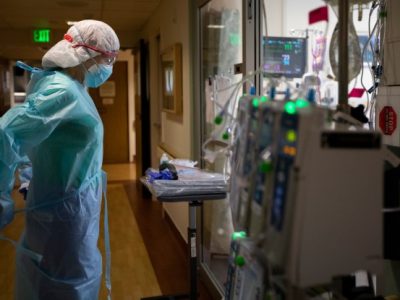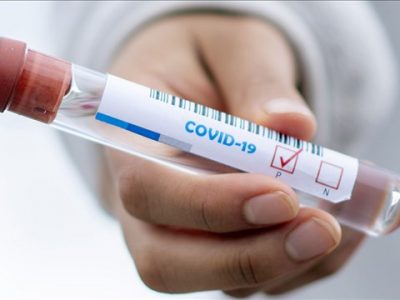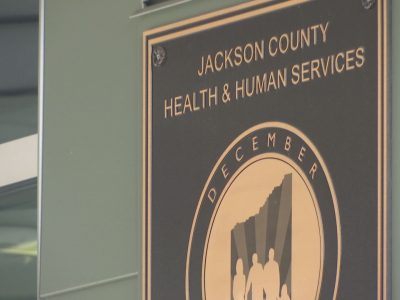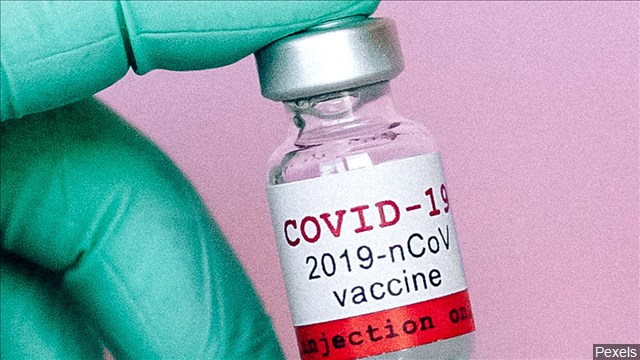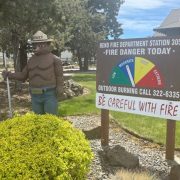
Medford, OR –
- A severe, persistent headache — it just won’t go away or lessen
- Shortness of breath
- Blurred vision
- Chest or abdominal pain
- Swelling or redness in arms or legs
- Pale color or coldness in arms or legs
- Seizures
Does the blood clot only happen in the brain?
With the condition occurring after the AstraZeneca vaccine, not necessarily. It could occur in arteries or in veins anywhere in the body.
So far, all the cases following the Johnson & Johnson vaccine have occurred in the brain. There are too few cases to know if that’s the only place it will or could occur.
The risk of VITT after the AstraZeneca vaccine is about 21 days, the longest it’s likely to take your body to produce antibodies. If the condition being investigated by the CDC and FDA after Johnson & Johnson vaccines is the same, the risk period will be the same.
So how do you treat this low-platelets-with-blood-clotting thing?
If you have the symptoms of VITT after the AstraZeneca vaccine, the first thing a doctor will do when someone comes in with symptoms is a complete blood panel (CBC) to see if their platelets are low.
“If your platelets aren’t low, you don’t have this,” Pai said. If you do have low platelets, the doctor then draws blood to test other markers to see if your lab values match what would be expected from VITT. If it appears you have it, the doctor will give you non-heparin anticoagulants (blood thinners) and intravenous immunoglobulin (IVIG), the same treatment given for Multisystem Inflammatory Condition in Children (MIS-C) from Covid. IVIG tells your immune system to chill out and reduces inflammation. In fact, the very first use of IVIG was precisely for immune thrombocytopenic purpura (ITP), starting in 1981. You may receive steroids or some other treatments.
“Yes, it’s scary but we know how to diagnose it and we know how to treat it,” Pai said.
Will that be the treatment in people who develop blood clotting symptoms after the Johnson & Johnson vaccine? We don’t know yet because it hasn’t been determined whether it’s the same condition. Right now it’s all speculation and questions.
Why does the AstraZeneca vaccine lead to this VITT condition?
That’s an open question. “We don’t know exactly what it is about the AstraZeneca vaccine that triggers it, and we REALLY don’t know what’s going on with Johnson & Johnson,” Pai said. If what’s happening with the J&J vaccine is the same thing being seen with AstraZeneca, “then that leads to some speculation about what’s causing it,” she said.
One possibility is the common platform: Both vaccines use an adenovirus — a common cold virus modified so it can’t replicate — to carry DNA instructions for making the spike protein to cells. These vaccines work similarly to mRNA vaccines except mRNA vaccines contain mRNA instructions in a liquid fat droplet, and AstraZeneca and Johnson & Johnson vaccines contain DNA instructions in the hollowed out adenovirus.
“It is well known that adenovirus binds to platelets and causes platelet activation,” researchers wrote in the recent NEJM study on VITT. Though they don’t think a tiny amount of adenovirus exposure on its own is likely to have caused the blood clotting condition, “interactions between the vaccine and platelets or between the vaccine and PF4 could play a role,” they wrote. It’s possible, for example, that the free-floating DNA inside the adenovirus is attaching itself to PF4 and contributing to the activation. But that’s just speculation. Right now, there’s a lot we don’t know and a lot that scientists are furiously trying to find out.
Are these clots a risk with the mRNA vaccines?
Not so far, said Jain. “With the data and evidence that is out there right now, if there is a causal relationship between the vaccines and these rare clotting cases, the two vaccines that need to be looked at more closely are the AstraZeneca and Johnson & Johnson,” she said.
The lack of reports for the Moderna and Pfizer/BioNTech is great news, suggesting the culprit activating PF4 is probably not the spike protein, Pai said. That means this blood clotting condition is not something that would occur with all Covid-19 vaccines.
In fact, Ramers pointed out, data has shown no increased risk of typical blood clots from any of the vaccines.
Why didn’t we find out about these clots during clinical trials?
Clinical trials enroll tens of thousands of people so that they have a better chance of identifying rare adverse events, or side effects. But these clots have occurred at a rate of one in 1.1 million. Trials of 40,000–50,000 people simply cannot detect something this rare, if it’s linked to the vaccine.
That said, there was one case of CVST that occurred in the Johnson & Johnson phase 3 trial. The trial was paused October 11, 2020, to investigate a 25-year-old man who had a cerebral hemorrhage and transverse sinus venous thrombosis. According to an FDA briefing document on the vaccine (see page 47), the researchers determined that the event was not related to the vaccine. It’s still unclear whether that case and these other six cases are similar.
Who’s at the greatest risk for this condition? Are there any groups that should not get the Johnson & Johnson vaccine?
Slow down… that’s exactly what scientists are trying to find out. Right now, there is not enough data to tell which groups could have an increased risk of clots — if these clots are even caused by the Johnson & Johnson vaccine, something that hasn’t been shown yet.
There are certain risk factors that can increase the risk of blood clots in general:
- Having a recent surgery
- Pregnancy
- Being immobile for long periods of time
- Smoking
- Carrying a lot of extra body weight
- Family history of blood clots or clotting disorders
- Taking certain types of hormonal birth control (not all types)
However, it’s not clear if these risk factors apply to blood clots following vaccination. “Even though all of the cases in the United States were in females, there is not enough information or number of cases to determine particular risk factors for clotting at this time,” Rubin said.
Is this the same kind of blood clot that people can get if they’re taking birth control pills?
Not exactly, and we don’t know if receiving the vaccine while taking hormonal birth control increases the risk of clots — again, if the clots are related to the vaccine. The risk of blood clots with hormonal birth control containing estrogen tends to be about one out of 1,000 people. That’s not as rare as what’s being seen with the Johnson & Johnson vaccine, but it’s still extremely rare. It’s also a lot less than the risk of blood clots during pregnancy, which is about one in 300.
What’s next?
The CDC issued an official health alert to notify health care workers, public health officials, and the general public on what to look out for. On Wednesday, April 14, the CDC’s Advisory Committee on Immunization Practices is holding an emergency meeting from 1:30–4:30 pm ET to review the existing data and determine what changes, if any, should occur in recommendations for the Johnson & Johnson vaccine. Like all ACIP meetings, it is open to the public. You can find the webcast link here.
So let’s say these blood clots are caused by the Johnson & Johnson vaccine. What does that mean?
It means you have to evaluate the risks and benefits of the vaccine against the risks of catching Covid and all that comes with it, including risk of hospitalization, long-term symptoms, and death. Unfortunately, humans aren’t great at those kinds of assessments, “sort of like the kid who needs to fall out of the tree to realize that he/she needs to be careful when playing in the tree,” Ramers said. But we have to keep trying.
“We face much greater risks of death every time we get in our cars, not to mention the approximately 1% mortality risk of getting Covid or the approximately 20% risk of blood clots if admitted with Covid,” Ramers said. “This is a very hard message to convey for public health officials, but it is happening in real time in the EU. They have 222 cases of CSVT out of 34 million AstraZeneca vaccinations and have to try to convey that, yes, it seems like a real association, but also that Europe is on fire right now and the risk of dying of Covid is so much greater.”
He emphasized how small a risk of one in 1 million is.
“I would still recommend — even for my 12-year-old-daughter — to receive the J&J vaccine so as to benefit from immune protection, freedom to be with her girlfriends and have sleepovers, go to soccer practice without a mask, and so on,” Ramers said. “She does far riskier things every day, and we are still seeing approximately 200–300 cases per day in San Diego County, including in children.”
Rubin tries to help patients consider risks and benefits by putting them into context with other risks:
- “The risk of blood clots postpartum is about 40–65 per 10,000 during the first 12 weeks.
- The risk of getting hit by lightning is about twice as high as the risk of getting a clot from this vaccine.
- You are much more likely to get hit by a car than get a clot from this vaccine.”
This graphic nicely shows a comparison of benefits to risks of getting the AstraZeneca vaccine. It’s not directly comparable to the Johnson & Johnson vaccine, but it gives you an idea of how the benefits build up over time, especially since the risk period for the blood clots lasts only three weeks and the clots are identifiable and treatable.
“The silver lining of all this is that the scientific community is actively surveilling and sharing information,” Pai said. “This is proof that vaccine surveillance systems work. We’re pausing to get more information, and my hope is that in the coming weeks and months we’ll be able to offer better risk estimates.”


